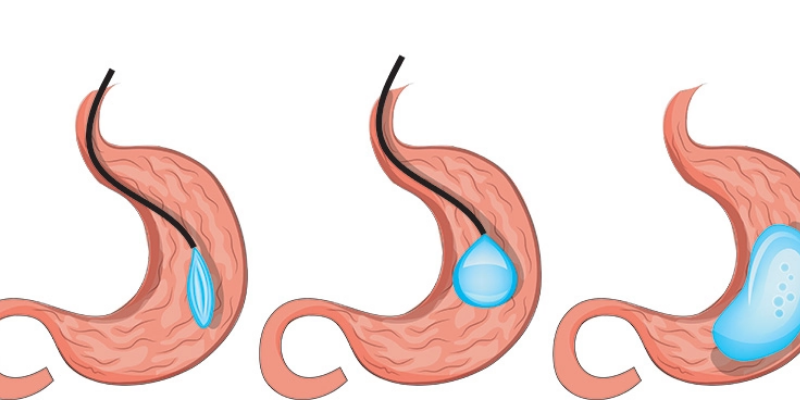Safest Weight Loss Surgery
What is the safest weight loss surgery? Obesity is a disease that may be avoided. Obesity prevention increases a person’s quality of life and overall health in addition to ensuring a healthy weight. Millions of individuals throughout the world are threatened by the contemporary world’s lifestyle and improper eating habits. Obesity, which is classed as a chronic and progressive condition, diminishes people’s quality of life and has an impact on their social lives, while also posing major health risks.
Obesity, which is described as having an extra weight that has a negative impact on one’s health, may be caused by a variety of factors including a high-calorie diet, a sedentary lifestyle, insufficient sleep, hormonal issues, medication side effects, and genetic predisposition.
Because obesity has such a complicated structure, it’s important to take a holistic approach to treating it. Obesity has a negative impact on the body due to excess weight or fat buildup, but it also puts people’s lives in jeopardy due to the secondary disorders it generates. As a result, folks who are obese must go on a long-term weight-loss journey.
Gastric bands, which can be used to manage obesity, can be implanted with a quick surgical procedure. A sort of ring made of silicone construction is placed around the neck of the stomach with this therapy, which is applied with laparoscopic surgery, that is, using the closed surgical approach. This material, also known as the laparoscopic gastric band, does not induce allergies since it is not regarded as a foreign substance by the body. The procedure may be performed in within an hour. The tape is one centimeter in width and 10 centimeters in length.
Gastric Band Is The Safest Weight Loss Surgery
The bands gently tighten a few inches forward of the junction of the esophagus and the stomach, forming an upper stomach chamber about the size of a walnut. At the stomach’s entry, the eaten meals reach the upper stomach chamber. The natural transit of food from the region compressed by the gastric band blocked. In summary, the upper stomach chamber create by squeezing the stomach band, and it is here that the nutrients are absorbed. The transfer from the stomach to the remainder of the body is slower and less frequent. Obesity therapy directly aided by this. Slowly passing meals allow the sufferer to feel fuller for extended periods of time.
Furthermore, weight growth halted and, on the opposite, dieting aided by slower food absorption. The application of a gastric band is a surgical procedure that does under general anesthesia. The operation takes a maximum of one hour to complete. For this treatment, which performs using a closed surgery, i.e. the laparoscopic approach, the patient only has to stay in the hospital for one day. This approach, while is frequently utilize in Europe, is less widely employ in the United States. The risk of death after gastric band surgery estimated to be 3-4 per 1000 people. So that, this makes gastric band is the safest bariatric surgery method.
According to the same research, 5 to 10 patients out of every hundred may experience complications as a result of the procedure or the body’s view of the gastric band as a foreign body. Individuals who are sensitive to silicon-derived chemicals, which are extremely rare, should avoid it.
Who Can Have Gastric Band?
Individuals with a BMI of 40 or above are the best candidates for gastric banding. It can use on any obese patient between 18 and 65 who is in good enough health to undergo the procedure. The patient who will have a gastric band must have been obese for at least five years. Patients under the age of 18 can get a gastric band if their parents agree. Gastric band surgery does not recommend for those who are allergic to silicone-derived compounds. Furthermore, it required to implement diet regimens for the treatment of obesity that has not shown sufficient, little, or no beneficial outcomes.
How To Perform Gastric Band Surgery?
General anesthesia administered to the patient. Closed surgery, or laparoscopic surgery, used. The 10-centimeter band insert into the stomach through a few minor surgical incisions. By progressing through the incisions, it put a few inches forward of the stomach-esophagus junction. The stomach band tightened like a belt during this twisted positioning. At the stomach’s entrance, a distinct chamber picture about the size of a walnut generated. Ingested food directed to the taped-off region of the stomach. The transition from this area to the remainder of the stomach is sluggish and irregular.
In summary, because the tape compresses the entry area of the stomach, it hoped that the obese patient will feel fuller for longer, and because the transit of food to the remaining part of the stomach slows, absorption will also delay. This entails inflicting immediate crippling consequences. The dangers of this procedure, which is fairly prevalent in Europe, estimate to be 3-4 per thousand. Complications such as tape perforation and tape rejection by the body occur seldom. Non-compliance with the specifically tailored meals for the patients, on the other hand, is another factor that might lead to the development of potential problems.
Post Gastric Band Process
The patient followed up on at regular intervals after gastric band surgery. The inner section of the gastric band is a balloon that advances in the shape of a strip, with a 3 mm tube positioned in the advancing part of this balloon. During the procedure, the hose’s tip secured beneath the skin. A needle used to inflate the balloon from the outside, and the stomach’s neck narrows. Patients will put on strict diet and fitness regimes after the procedure. Every month, the progress and rate of weight reduction closely monitor. If weight reduction slows or stops, a further short-term procedure can perform to narrow the gastric band. Injections into the skin tissue might constrict the knuckle even further. As a result, food flow further restricted.
If required, you will discharge one or two days after the procedure. Because laparoscopic surgery, or closed surgery, employ, the surgical scar is small and light. Various skin deformations – sagging – may develop if people lose 40-50 kg in a short period of time. You may vomit if you continue to eat too much food too soon after the procedure. You may feel constipation as a result of your eating habits after the operation, but only for a brief period.
The Safest Weight Loss Surgery for Your Case
If you are considering the safest weight loss surgery for your particular case, it is important to discuss the risks and benefits with your doctor. Furthermore, it is also important to consider how well the procedure fits with your lifestyle, goals, and expectations. After doing research and consulting with your doctor, you may have decided that a particular type of weight loss surgery is right for your case. The next step is to meet with an experienced surgeon who can help you better understand the procedure, answer any questions you may have, and further discuss the associated risks.

The ultimate goal is to find a safe and successful path toward achieving your desired surgery for weight loss goals. With careful consideration and an expert eye guiding you along the way, you will be on your way to a healthier future. The safest procedure for your case will depend on various factors such as health history and body type. Remember that although every type of surgery carries certain risks, many surgical treatments for treating obesity are considered generally safe if performed by an experienced physician. Therefore, it is essential to take time and thoughtfully evaluate all of the options before making a final decision about the safest weight loss surgery option for you.



